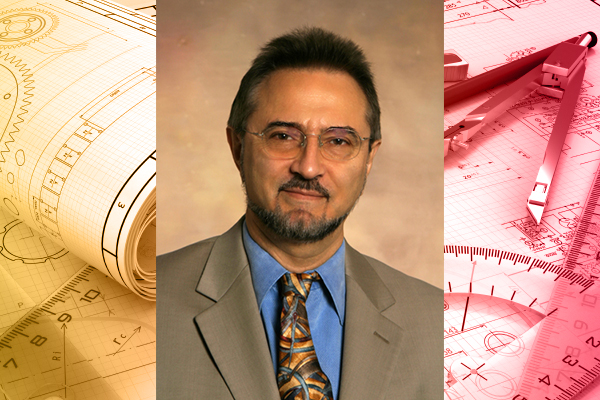Valery Levitas, Schafer 2050 Challenge Professor and faculty member of aerospace engineering and mechanical engineering, and his collaborators from Texas Tech University were published in the Proceedings of the National Academy of Sciences of the United States of America (Ji C., Levitas V. I. et al., PNAS, 2012, 109, 19108-19112), the world’s foremost interdisciplinary journal.
 In their paper “Shear-Induced Phase Transition of Nanocrystalline Hexagonal Boron Nitride to Wurtzitic Structure at Room Temperature and Low Pressure,” the researchers have proved experimentally and theoretically that large plastic shear strain in nanocrystalline and highly disordered materials can reduce phase transformation pressure by an order of magnitude. Using a unique device, a rotational diamond anvil cell, which Levitas has brought to the United States from his former research group in Kiev (Ukraine), and in situ synchrotron radiation diagnostics, the researchers found the phase transition from disordered nanocrystalline hexagonal BN to superhard wurtzitic BN under a pressure of 6.7 GPa after applying large plastic shear. Yet, under hydrostatic compression to 52.8 GPa, the same hexagonal BN sample did not transform. Usually, large plastic straining leads to disordering and amorphization; here, in contrast, highly disordered BN transformed to crystalline BN. The mechanisms of strain-induced phase transformation and the reasons for such a low transformation pressure are discussed. Obtained results demonstrate an applied potential of low pressure-room temperature synthesis of superhard materials under plastic shear from disordered or amorphous precursors.
In their paper “Shear-Induced Phase Transition of Nanocrystalline Hexagonal Boron Nitride to Wurtzitic Structure at Room Temperature and Low Pressure,” the researchers have proved experimentally and theoretically that large plastic shear strain in nanocrystalline and highly disordered materials can reduce phase transformation pressure by an order of magnitude. Using a unique device, a rotational diamond anvil cell, which Levitas has brought to the United States from his former research group in Kiev (Ukraine), and in situ synchrotron radiation diagnostics, the researchers found the phase transition from disordered nanocrystalline hexagonal BN to superhard wurtzitic BN under a pressure of 6.7 GPa after applying large plastic shear. Yet, under hydrostatic compression to 52.8 GPa, the same hexagonal BN sample did not transform. Usually, large plastic straining leads to disordering and amorphization; here, in contrast, highly disordered BN transformed to crystalline BN. The mechanisms of strain-induced phase transformation and the reasons for such a low transformation pressure are discussed. Obtained results demonstrate an applied potential of low pressure-room temperature synthesis of superhard materials under plastic shear from disordered or amorphous precursors.
Another paper by Valery Levitas and Mahdi Javanbakht, his PhD student from the Mechanical Engineering Department, was recently published as Rapid Communication in Physical Review B (Levitas V.I. and Javanbakht M. Physical Review B, Rapid Communication, 2012, 86, 140101(R)). In their paper “Advanced phase field approach to dislocation evolution,” they resolved several conceptual problems in the phase field theory and simulation of dislocations, which lead to their significant advancements. Problems for nucleation and evolution of multiple dislocations and the interaction of dislocations with a phase interface are studied using finite element method. An unexpected scale effect in the athermal resistance to the phase interface motion due to nucleated incoherency dislocations is revealed.
Links to publications:
http://www.pnas.org/content/109/47/19108.full?sid=3259b2c5-78cc-419b-96a1-13a8a32424b4
